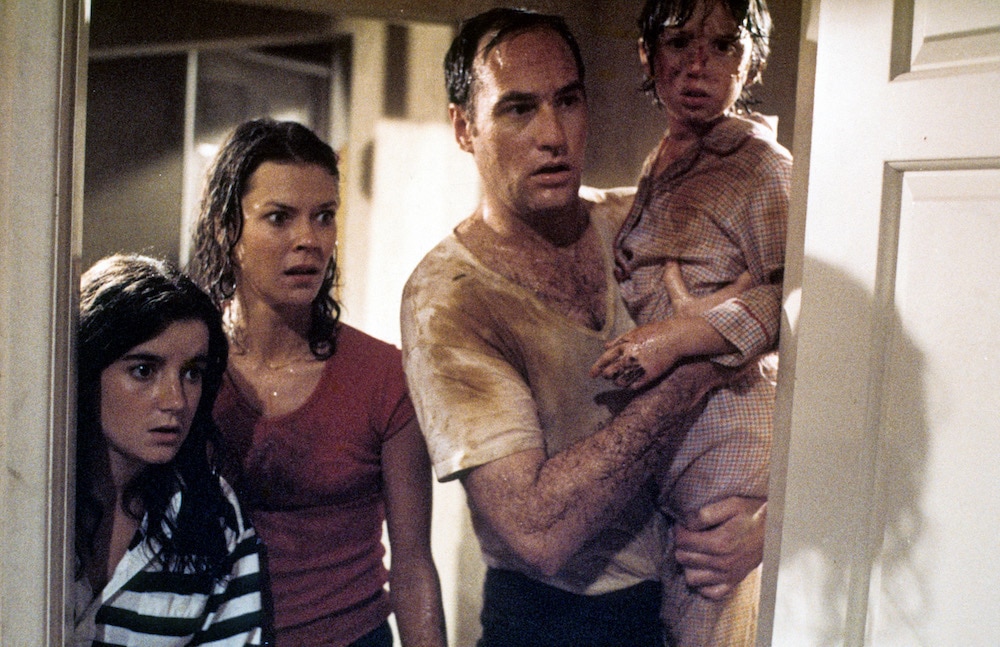Create a free profile to get unlimited access to exclusive videos, sweepstakes, and more!
40 years later, 'Poltergeist' remains the ultimate family horror movie
After four decades, we still love the Freeling family.

Families build universes inside their homes, regardless of size or status. Whether you lived in the same home for your entire childhood or you moved a few times, you might remember this phenomenon. Once you're settled, if your family life is stable enough, your house becomes much more than where you sleep. It becomes a haven for every hope, every thought, every secret game.
This is a large part of why haunted house stories are scary to us, the idea that something could pierce the sanctity of that haven from the inside and tear the little universe we've built in there to pieces. Poltergeist, the 1982 haunted house classic directed by Tobe Hooper and produced and co-written by Steven Spielberg, is one of our finest examples of this very specific fear, not just because of how scary it is, but because of how much we believe in the family at its core.
Poltergeist, which turns 40 this month as part of the legendary genre movie summer of 1982, begins its journey at the end of a day in the lives of the Freeling family, and immerses us immediately in the comfort and ease of the life they've built together in the planned community patriarch Steven (Craig T. Nelson) helps to sell to the public. We see Steven dosing happily in his chair, and then meet the rest of the Freelings through the eyes of the family dog as he snoops around the house for snacks. Everything about the sequence exudes comfort, from the 1980s carpeting many of us remember rolling across so well to the gentle light of static on the television to the bag of Lay's potato chips the dog finds and chows down with. There's a peace in the chaos of the Freelings, and it's broken when little Carol Anne (Heather O'Rourke) walks up to the flickering TV static — a symbol during this particular American era that the day was done and there was no more excitement to be had — and starts talking to it.
I'm struck by something different, each and every time I revisit Poltergeist, one the most rewatchable horror films I've ever encounter, and in looking at it again this past week I was reminded just how joyous it is, even when the real horror of it all starts to kick in. Carol Anne's conversation with the television is evidence that something is off, but when the poltergeist in the house starts rearranging the kitchen chairs, Diane Freeling (JoBeth Williams) initially treats it with wonder, not with fear. She stages little tricks for the house to do, shows them to Steven, and generally marvels at the new companion in the home, the universe, she's built with her husband and her kids. Then comes that fateful night when a tree almost devours Robbie (Oliver Robins) and Carol Anne vanishes into her closet, trapped on the other side of a paranormal rift.
From that point forward, the horror elements of the film almost never let up, something that feels like vintage Hooper, who loved to pile on a certain level of sensory overload in his very best scarefests. The sheer amount of phenomena within the Freeling's home is often head-spinning, from the legendary face-peeling scene to the floating furniture in Carol Anne's room to my personal favorite, the giant screaming skull that pops out of the closet during the rescue attempt. Hooper pours it on as much as the family friendly constraints of the film's rating will allow, and then some, and it's a blast to watch if you came for the scares. But he, and Spielberg, also never lose sight of Poltergeist's secret sauce: That sense of a family whose universe has been punctured by a dark force they couldn't see coming.
The Freelings can't, and don't, leave their home after Carol Anne disappears because they know she's in there somewhere. They hear her through the TV static, feel her moving around in the same space. She's still a part of their carefully orchestrated universe, and that gives them both determination and enough hope to try and ride the crisis out with the help of some paranormal experts.
Even then, the sense of joy and communal comfort persists in the house, thanks in part to some expert production design that includes plants dangling down from the high ceilings and that spiral staircase that emphasizes a certain child's eye vastness in the compositions. The Freeling home, especially when Carol Anne disappears, is a big place, and thus the family can still find comfort in each other and in the hope that somewhere in that vastness they will find Carol Anne. We feel that comfort in the jokes they make to the investigators about how the lights flash in pairs, in the way they group together in the living room to fall asleep, and in the joy on Diane's face when she realizes she can smell Carol Anne's presence.
It's this sense of comfort, even in crisis, that makes Poltergeist the ultimate family horror movie, both in the sense that it's a great horror film about family and a great horror film to watch with your family. It's the kind of movie that emphasizes that very particular fear of having the place where you lay your head suddenly corrupted, but it's also, in the end, a horror film in which no one dies, and in which the Freelings eventually realize that their house is not what's important, that they can rebuild that universe somewhere else...you know, without a TV this time.

























